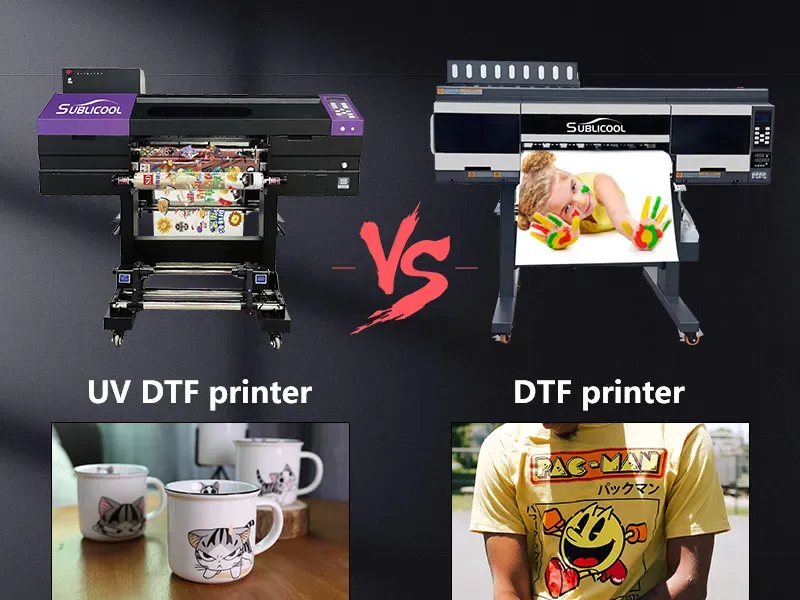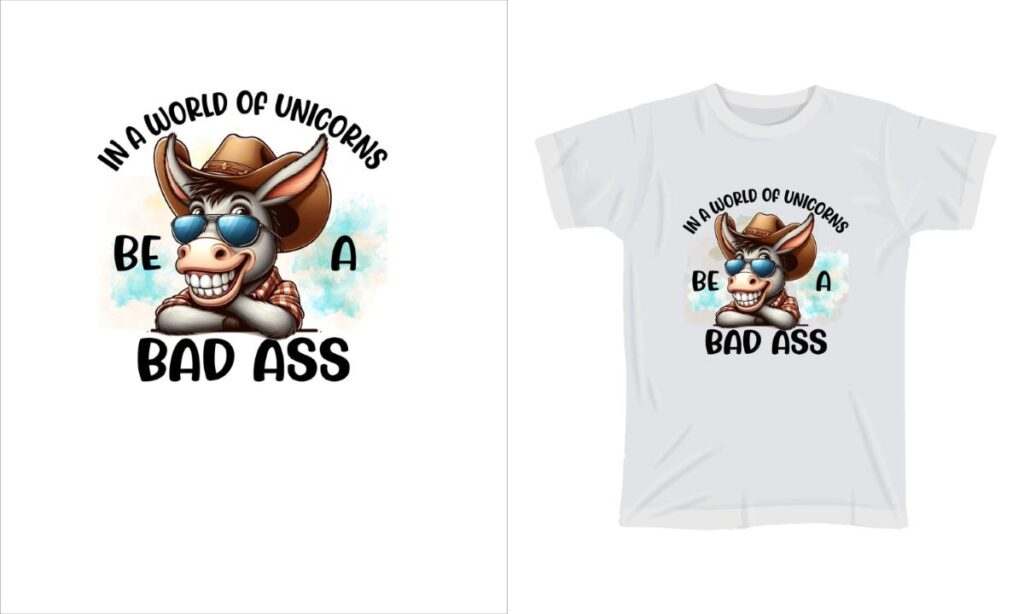When it comes to UV DTF vs. Traditional DTF, businesses must navigate a rapidly evolving landscape of printing technology that is changing the way textiles and other materials are printed. Direct-to-Film (DTF) printing technology offers an innovative solution by differentiating itself from older methods such as screen printing and heat transfer. While traditional DTF employs heat to transfer images onto fabric, UV DTF utilizes ultraviolet light for curing inks instantly, offering remarkable durability and vibrancy. This article explores the essential differences in these digital printing options, including their impact on sustainability and efficiency. With the rise in demand for sustainable printing methods, understanding these distinctions is vital for businesses aiming to increase their production capabilities sustainably.
In the realm of modern printing techniques, the debate between ultraviolet Direct-to-Film (UV DTF) and conventional DTF methods has gained significant attention. Both approaches fall under the umbrella of Direct-to-Film technology, yet they exhibit distinct mechanisms in transferring designs onto various substrates. As industries prioritize rapid production and environmental mindfulness, exploring these printing alternatives reveals a spectrum of advantages and limitations. This discussion not only sheds light on effective digital printing options but also emphasizes how each method caters to different business needs. By evaluating the potential of UV printing alongside traditional approaches, companies can better align their operational strategies with their creative aspirations.
The Basics of DTF Printing Technology
Direct-to-Film (DTF) printing technology has revolutionized the way businesses approach textile printing. By enabling high-quality prints to be made directly onto special film, DTF has gained popularity for its efficiency and versatility. Unlike traditional methods that often require multiple steps and equipment, DTF primarily involves applying ink to the film and transferring it onto fabric using a heat press. This process not only streamlines production but also ensures consistent quality in prints, making it a preferred choice for many businesses entering the digital printing space.
Moreover, advances in DTF technology mean that it can cater to a wider array of applications and substrates. Companies can utilize DTF printing for a range of products, from t-shirts to tote bags, effectively broadening their market reach. With DTF technology continuously innovating, the landscape for digital printing options is expanding, providing businesses the tools to compete effectively and fulfill customer demands.
Understanding UV DTF and Its Benefits
UV DTF printing is an advanced technique that incorporates UV light to cure inks as they are printed, leading to vibrant colors and extraordinary durability. This innovation sets UV DTF apart from traditional DTF; it provides businesses with the ability to print on a variety of surfaces beyond just fabrics, including rigid materials. This increased flexibility is particularly advantageous for companies that wish to diversify their product lines, tapping into new markets while maintaining high-quality standards in their prints.
Additionally, the UV curing process minimizes the drying time for prints, enabling businesses to achieve quicker turnaround times. In fast-paced industries where consumer demand for products is high, the efficiency of UV DTF can significantly impact operational output. Furthermore, the durability of UV-cured prints means that products can withstand physical wear and environmental exposure, making UV DTF the go-to choice for items meant to last.
Comparative Analysis: UV DTF vs. Traditional DTF
When comparing UV DTF vs. Traditional DTF, several key factors come into play. While both technologies offer the ability to produce high-quality prints, UV DTF excels in versatility and speed. The UV curing process not only locks in vibrant colors but also allows for instant production—enabling businesses to print, package, and ship products faster than traditional DTF methods that require additional heat application for ink transfer.
Another crucial difference lies in durability. UV DTF inks are resistant to fading and wear, making them ideal for outdoor applications and frequently used items, whereas traditional DTF prints, while still good, may not hold up as well under heavy handling. This distinction can be vital for businesses hoping to provide long-lasting solutions to their customers, emphasizing the importance of evaluating print longevity when choosing between these two DTF technologies.
Sustainability in Printing: DTF Approaches
Sustainability is an increasingly vital consideration in the printing industry, and both DTF technologies offer pathways to more environmentally friendly practices. Traditional printing methods often involve significant use of chemicals and energy, whereas DTF technologies, particularly UV DTF, have been shown to minimize waste and reduce the carbon footprint associated with the printing process. As businesses seek to adopt more sustainable printing methods, DTF emerges as an attractive option.
Furthermore, many companies are turning to DTF printing as part of their broader commitment to eco-friendly practices. The reduced chemical usage and energy consumption associated with UV curing make it a favorable choice for brands focusing on sustainability. This shift not only benefits the environment but can also enhance a company’s reputation among eco-conscious consumers, who are increasingly prioritizing sustainability in their purchasing decisions.
Recent Innovations in DTF Technology
The DTF printing landscape continues to evolve with impactful innovations that enhance production efficiency and capabilities. Companies like Epson have spearheaded developments in DTF technology, introducing wide-format printers designed specifically for DTF applications. These innovations not only streamline the printing process but also enable larger and more complex designs to be printed with ease, catering to market demand for customization and creativity.
Additionally, advancements in DTF inks and films are constantly emerging, with producers focusing on developing high-quality, eco-friendly materials that enhance print durability and vibrancy. As the market for digital printing options expands, businesses that stay abreast of these innovations are better positioned to adapt to customers’ changing preferences and technology’s evolving landscape, ultimately setting themselves apart in a competitive space.
Choosing the Right DTF Technology for Your Business
Choosing between UV DTF and traditional DTF prints involves analyzing your business’s specific needs, goals, and market trends. For businesses primarily focused on apparel, traditional DTF may offer a straightforward approach with proven results. However, if your business models around variety and rapid turnaround times, UV DTF presents an opportunity to harness modern technology, increasing product offerings while maintaining high-quality outputs.
Ultimately, the decision should factor in critical elements such as production efficiency, material capabilities, and sustainability. It’s essential for businesses to evaluate not only current needs but also future goals, as embracing the right DTF technology can lead to increased profitability and customer satisfaction. By making an informed decision, companies can stay ahead in an industry characterized by constant change and innovation.
Frequently Asked Questions
What are the main differences between UV DTF vs. Traditional DTF printing technologies?
The main differences between UV DTF and Traditional DTF relate to durability, print quality, and material compatibility. UV DTF offers superior durability and vibrant colors due to its instant curing process, making it suitable for various surfaces, including fabrics and rigid materials. In contrast, Traditional DTF is focused on textiles and involves heat transfer, which may consume more energy and time.
How does UV DTF technology promote sustainable printing methods compared to Traditional DTF?
UV DTF technology promotes sustainable printing methods by reducing chemical usage and energy consumption with its innovative curing process. This makes it more eco-friendly compared to Traditional DTF, which relies on heat transfer that can increase energy usage and chemical processing.
Which printing technology, UV DTF vs. Traditional DTF, is more versatile for businesses?
UV DTF is more versatile than Traditional DTF, as it can print on a wider range of materials, including fabrics, plastics, and metals. This flexibility allows businesses to diversify their product offerings, unlike Traditional DTF, which is primarily limited to textiles.
What are the production speed differences between UV DTF and Traditional DTF?
UV DTF typically has a faster production speed than Traditional DTF due to its instant UV curing process, allowing businesses to print and ship products quicker. Traditional DTF requires additional time for heat pressing, slowing down the overall production timeline.
Is the print quality of UV DTF vs. Traditional DTF significantly different?
Yes, the print quality differs between UV DTF and Traditional DTF. UV DTF generally provides more vibrant colors and exceptional detail because of the instant curing process. Traditional DTF, while still high quality, may have variations in final appearance based on heat transfer techniques.
How do UV DTF and Traditional DTF compare in terms of durability?
UV DTF outperforms Traditional DTF in durability, as its UV-cured inks are highly resistant to wear and environmental factors, making it ideal for outdoor applications. Traditional DTF may wear out more quickly if not applied correctly, especially in high-use scenarios.
| Aspect | UV DTF | Traditional DTF |
|---|---|---|
| Durability | Highly resistant to wear and environment; suitable for outdoor applications | Wear may be quicker; depends on application quality |
| Print Quality | Vibrant colors due to instant curing | Excellent detail, quality depends on heat pressing technique |
| Material Compatibility | Prints on a variety of surfaces (fabrics, plastics, metals) | Primarily focused on textiles |
| Production Speed | Quick production due to instant curing | Longer processing times due to heat transfer |
| Sustainability | Reduced chemical usage and energy consumption | Higher energy consumption with heat pressing |
Summary
In considering UV DTF vs. Traditional DTF, businesses must analyze their production needs and desired outcomes. UV DTF distinguishes itself with its high durability and capability to print on multiple materials, which makes it an excellent choice for those looking to expand their product offerings. Conversely, Traditional DTF offers simplicity and proven reliability for fabric printing. Evaluating your operational goals, sustainability priorities, and product versatility will help you determine the most suitable printing technology for your business, ensuring you stay competitive in a rapidly evolving market.



